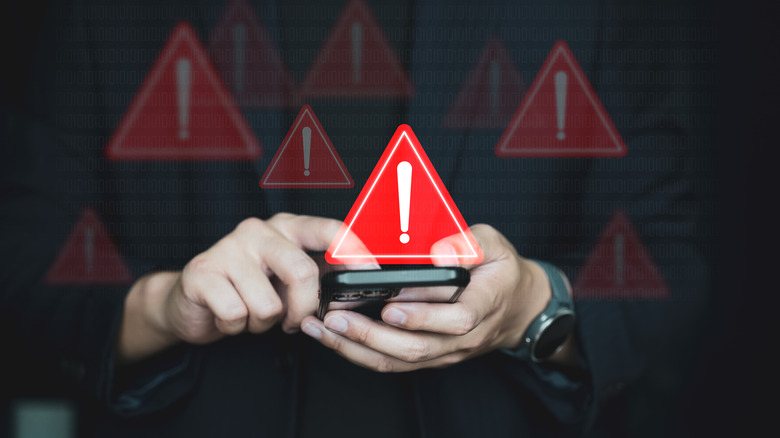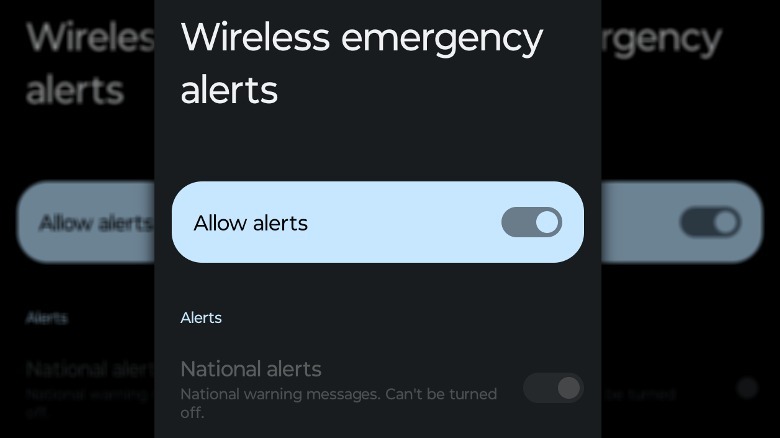How To Turn On Emergency Alerts On Your Android Phone (And Why You Should)
As society becomes more interconnected, information travels more quickly. For those born in this era, that sounds obvious, but consider that just a few hundred years ago, there was no way to know what was going on even in the next town over, short of walking over and seeing for yourself. Naturally, that connection allows us to keep in contact with friends and family and whatnot, but it's also a vital tool for keeping ourselves safe in all kinds of dangerous situations.
Like setting up an iPhone to receive emergency alerts, you can do the same if you're using an Android smartphone for any concerning or dangerous situations unfolding in your proximity, from natural disasters to missing persons. It's very important to have these updates on, as every bit of up-to-date information, even small details, could go a long way toward keeping you and your loved ones safe. As the old saying goes, "Arm yourself with knowledge."
How to enable Android emergency alerts
Emergency alerts are enabled on most Android phones by default, but if they're turned off, here's how to turn them back on.
-
On your Android smartphone's home screen, open the "Settings" app.
-
Tap the "Notifications" option.
Advertisement -
Tap "Wireless Emergency Alerts."
-
Activate the "Allow Alerts" toggle, and activate the "Emergency Alerts" you want to receive.
The alerts you can receive on your phone each have their own toggle. At the top of the list are "National Alerts," indicating threats affecting the entire country. This toggle cannot be disabled, nor should it be.
Below "National Alerts" are "Extreme" and "Severe Alerts." These alerts mean the same thing: Localized threats to safety and property. The precise difference is a bit murky, but generally, an "Extreme Threat" is worse than a "Severe Threat." For instance, a "Severe Threat" would be a strong thunderstorm or a flash flood, while an "Extreme Threat" would be a high-category hurricane, tornado, or even an armed criminal.
Next are "AMBER Alerts" and "PSAs." "AMBER Alerts" sound when a child has been abducted or gone missing nearby, providing details on the child in question to help bystanders spot them. "PSAs" are general advisories on potentially concerning situations; there is no imminent danger, just something to keep an eye on.
Finally, there are tests. The FCC occasionally conducts harmless system tests, like the test patterns you used to see on TV. Feel free to disable these.


